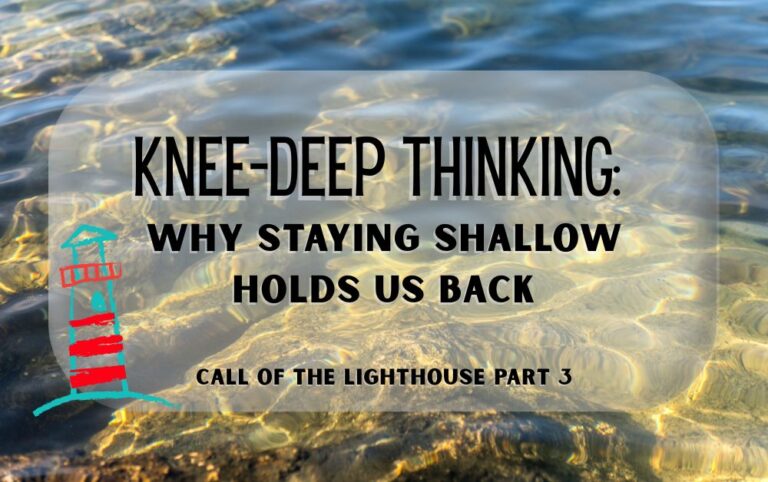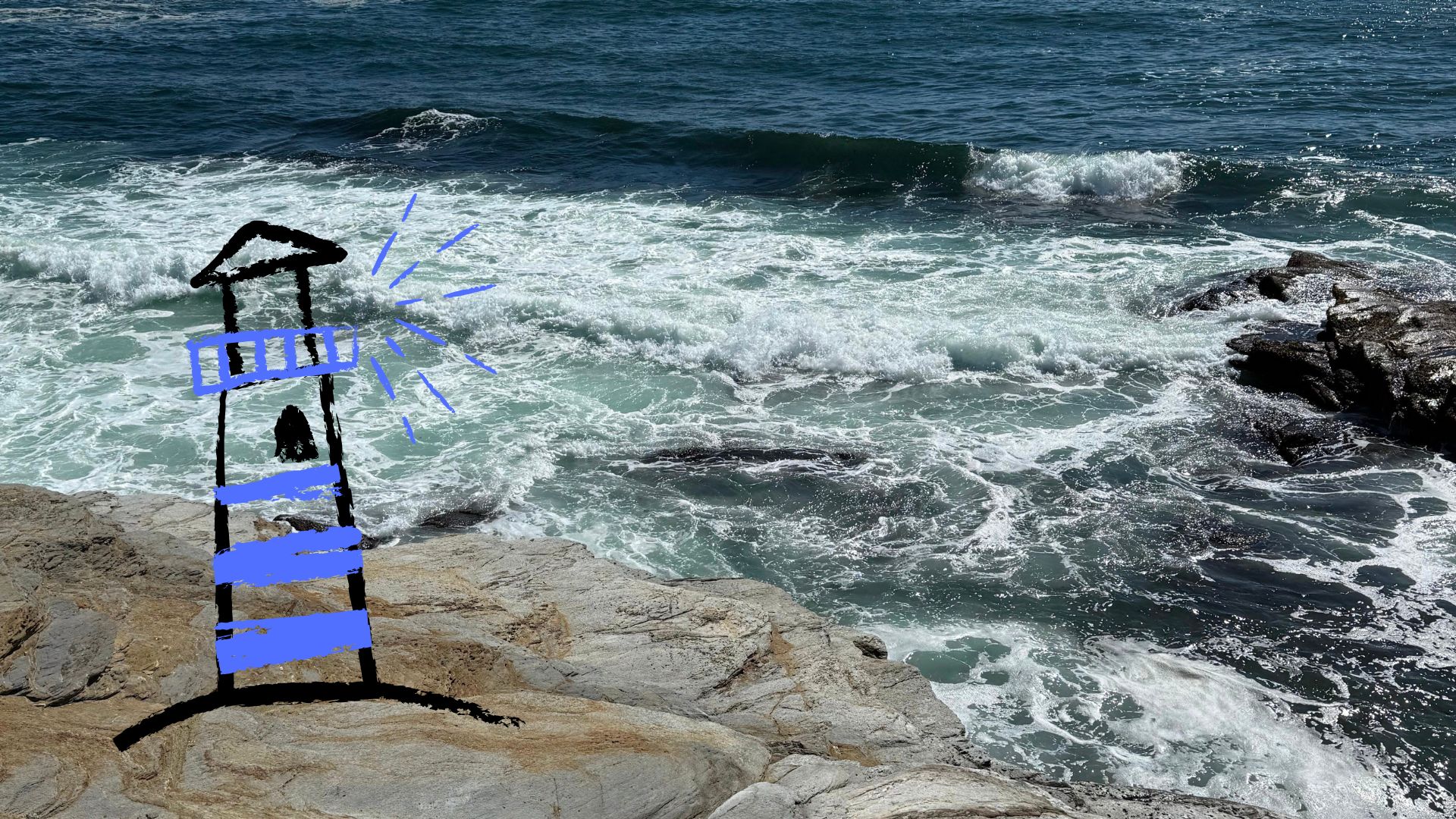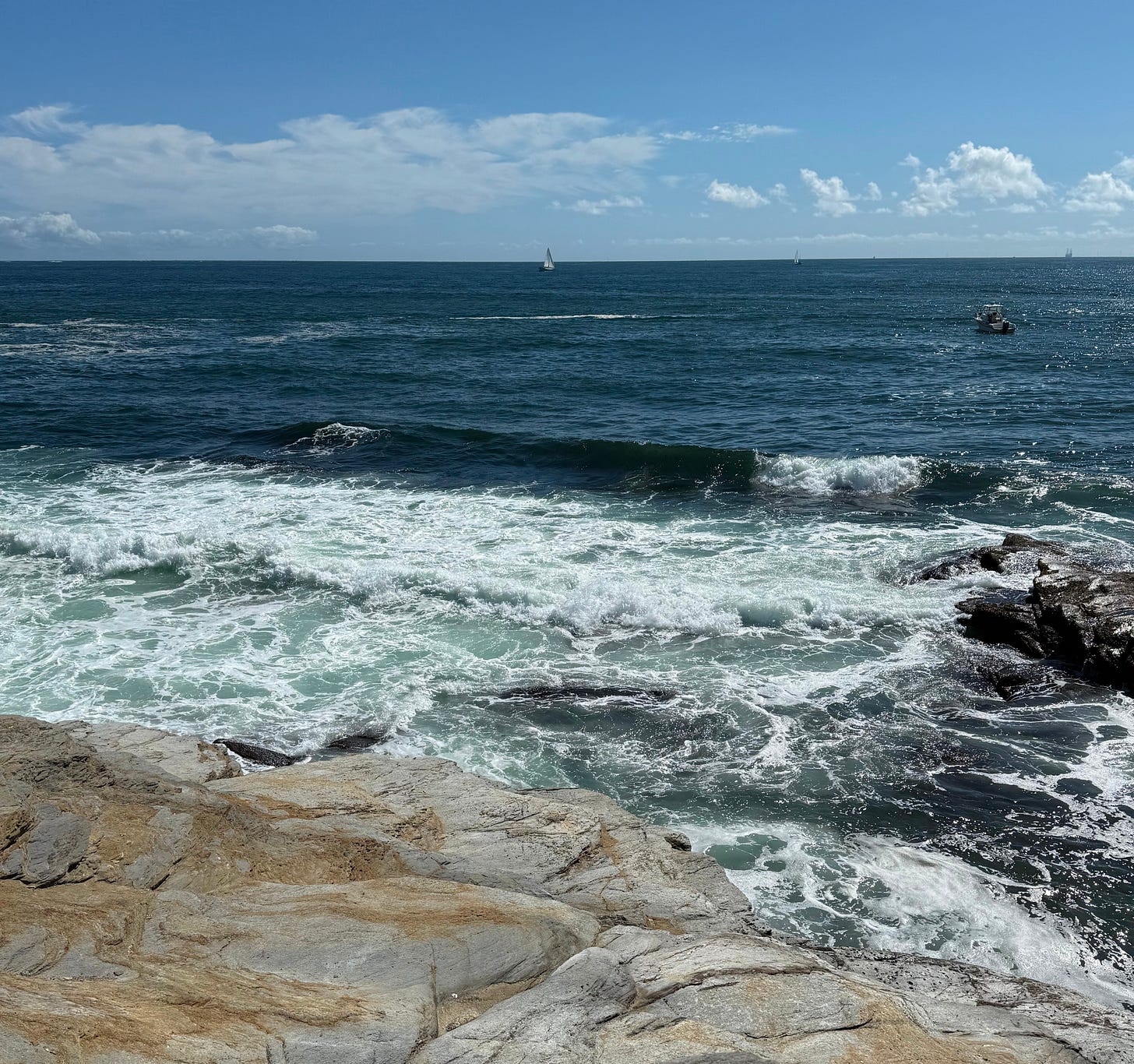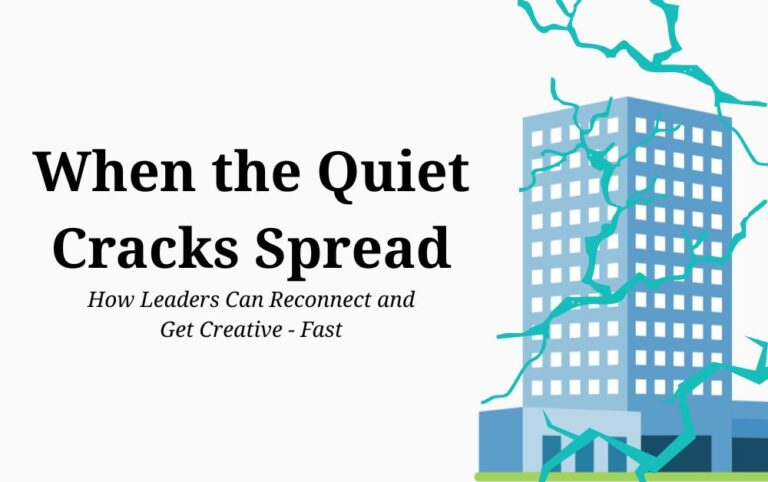
Knee-Deep Thinking: Why Staying Shallow Holds Us Back
Safe feels easy, but the real growth happens when we wade deeper.

A lighthouse doesn’t shine just for decoration; it exists because lives depend on it. In the same way, deep thinking isn’t just a nice extra skill. It’s what keeps us from crashing into the rocks of poor decisions, shallow habits, and noisy distractions. In a stormy world, deep thinking is our beam of light.
We’re surrounded by choices, arguments, and noise every single day. Without the habit of deeper thinking, our brains default to what feels quick and easy, snap judgments, biases, or those mental shortcuts that seem helpful but often trip us up. When we pause, dig deeper, and think critically, we’re much better at spotting hidden assumptions, logical gaps, and blind spots.
And the science backs this up: people who score higher on critical thinking assessments actually report fewer adverse life events. In other words, deeper reasoning works like cognitive insurance; it protects us from bad decisions. Researchers also note that barriers like over-trusting our gut, reacting emotionally, or sticking to old assumptions are exactly what hold us back from stronger thinking.
Deep thinkers don’t just stop at the answer; they go looking for the next question. They notice patterns, ask “what if?”, and aren’t afraid to chase possibilities that others might overlook. In classrooms, this kind of thinking is gold. It shifts students from being knowledge collectors to being knowledge creators, turning information into insight through reflection and inquiry.
The same principle applies in the workplace. Teams stuck in shallow thinking recycle the same ideas and wonder why nothing changes. But teams that embrace deep thinking look past the obvious solutions. They ask, “What’s the root cause here? What if we tried a completely different approach? How might this impact people down the line?” That curiosity drives innovation, problem-solving, and resilience in the face of change.
And here’s the best part: deep thinking isn’t some rare talent only a few people are born with. It’s teachable. One study using an Integrated Critical-Meaning (ICM) design found that students measurably improved their critical thinking across multiple dimensions. Translation? With the right practice, we can all get better at asking bigger questions, making deeper connections, and stretching our creativity, whether we’re in a classroom or a conference room. This is something that the world is desperately trying to capture.
Life can feel like a storm—news cycles spinning, distractions tugging at us, social feeds bombarding us with half-truths at lightning speed. In such chaos, shallow thinking leaves us adrift. But deep thinkers? They have an anchor – a lighthouse to look to. They pause to reflect on their values, question the stories they’re being sold, and resist the easy temptation of going along with the crowd.
As Christopher Sirk put it, “Thinking is at the center of our being, and deeper thinking leads to deeper living, while shallow thinking leads to a superficial life”.
The same holds true at work. Teams without deep-thinking leaders get pulled into panic mode when challenges hit and tend to react to every wave instead of charting a course. But leaders who practice deeper reflection act like lighthouses for their teams. They bring clarity, hold steady in uncertainty, and help others navigate through the fog of ambiguity.
A lighthouse isn’t immune to storms, but it’s built for them. In the same way, deep thinkers don’t avoid uncertainty, complexity, or tough moral choices. They train for it. They’re ready to face the waves because they’ve practiced navigating the messy waters.

If deep thinking is so valuable, why do so many of us dwell in the shallow? Here are some hurdles:
Due to these obstacles, many decisions, beliefs, and conversations remain stagnant in shallow waters. The danger? Ill-formed beliefs, distortions, echo chambers, and fragile understanding.
To become a lighthouse (or to move in that direction) is not an instant transformation. It’s a journey. But here are a few starter habits you can begin cultivating now:
Over the rest of this series, we’ll dive deeper (pun intended) into how surface and shallow thinking manifest, how to break free, and how to act as a thoughtful beacon for others.
Back at Beavertail Lighthouse, the wind whipped harder, tugging at my jacket and nearly stealing my hat. The sea churned, restless and gray. The lighthouse itself no longer shines, its beam long retired, but just standing there, it still felt like a promise. A reminder of all the storms it once cut through and the countless sailors it kept safe.
That’s the invitation for all of us. To build our own inner lighthouses, centers of clarity, curiosity, creative and critical thinking, and courage. To let our light cut through the noise for those who feel lost or adrift. And to remember: even when the storms are fierce, even when the beam feels faint, the strength of a lighthouse isn’t in perfection, it’s in standing firm.
Storms will come. Currents will shift. But the world doesn’t need more drifters—it needs lighthouses.
Be one
References:
Çelik, B., & Aytan, T. (2017). Critical thinking in education: Where does it stand in higher education? Journal of Education and Learning, 6(3), 13–25. https://files.eric.ed.gov/fulltext/EJ1143316.pdf
Dwyer, C. P., Hogan, M. J., & Stewart, I. (2023). An evaluative review of barriers to critical thinking in educational and real-world contexts. Journal of Intelligence, 11(6), 105. https://doi.org/10.3390/jintelligence11060105
Fong, C. J., Kim, Y. K., Davis, C. W., Hoang, T., & Kim, Y. W. (2017). A meta-analysis on critical thinking and community college student achievement. Journal of College Student Development, 58(8), 1151–1167. https://doi.org/10.1353/csd.2017.0096
Paulus, F. M., Müller-Pinzler, L., Westermann, S., & Krach, S. (2014). On becoming a thinking society: The social neuroscience of reflection. Frontiers in Human Neuroscience, 8, 54. https://doi.org/10.3389/fnhum.2014.00054
Saeed, M., & Jabeen, F. (2023). Effects of integrated critical-meaning (ICM) design on improving students’ critical thinking. Journal of Pedagogical Research, 7(2), 32–47. https://doi.org/10.1080/26939169.2024.2394534
Sirk, C. (2020, July 23). Why complex problems need a deeper and different way of thinking. CRM.org. https://crm.org/articles/why-complex-problems-need-a-deeper-and-different-way-of-thinking
Toplak, M. E., West, R. F., & Stanovich, K. E. (2014). Assessing miserly information processing: An expansion of the Cognitive Reflection Test. Thinking Skills and Creativity, 12, 41–48. https://doi.org/10.1016/j.tsc.2013.06.001
Share Post:

Safe feels easy, but the real growth happens when we wade deeper.

I can still picture it—walking through my northwest Chicago neighborhood with friends,

A Beacon on the Shore We’re drowning in information and starving for